Ski: 2021-2022 Blizzard Cochise 106, 185 cm
Test Location: Mt. Crested Butte, Colorado
Days Skied: 12
Available Lengths: 177, 185, 192 cm
Blister’s Measured Tip-to-Tail Length: 183.1 cm
Blister’s Measured Weight per Ski: 2232 & 2242 grams
Stated Dimensions: 136.5-106-124.5 mm
Blister’s Measured Dimensions: 136.7-106.1-123.2 mm
Stated Sidecut Radius (185 cm): 24 meters
Measured Tip & Tail Splay (ski decambered): 59 mm / 19 mm
Measured Traditional Camber Underfoot: 3 mm
Core: poplar/beech/paulownia + titanal (2 layers) + carbon tips & tails + fiberglass laminate
Base: sintered
Factory Recommended Mount Point: -11.35 cm from center; 80.2 cm from tail
Boots / Bindings: Head Raptor 140 RS, Tecnica Cochise 130, Tecnica Mach1 130 MV / Tyrolia Attack2 13 AT
[Note: Our review was conducted on the 20/21 Cochise 106, which returns unchanged for 21/22.]

For the 20/21 season Blizzard updated one of the longest-standing skis currently in production, the Cochise.
For nearly a decade, the Cochise has not only been one of our reference points for all-mountain chargers, but also the go-to ski for a lot of hard-charging directional skiers. So, why did Blizzard change the ski, and what’s actually different?
We’ve now spent a good chunk of time skiing the new Cochise 106 (which returns unchanged for 21/22) at Mt. Crested Butte, and have added our thoughts in our full review below.
What Blizzard says about the Cochise 106
“The brand new, redesigned Cochise 106 was made for the committed all-mountain skier who charges from top-to-bottom all day long and walks up to an empty tram line at 3pm for another round. Whether the conditions are chalk, chunder, blower, or cement, they’re able to ski hard all day, without making skiing hard. A freeride wood core combined with two sheets of metal, increased sidecut and reduced rocker profile allows you to be agile in tight turns and powerful when the slope steepens, opens up, and beckons. At 106-millimeters underfoot, this is an all-mountain charger that will allow you to do what you want, when you want.”
The big thing that Blizzard is claiming is that, while the Cochise 106 is still designed to be a stable, hard-charging ski, it’s supposed to be a bit more accessible and easier to ski than the most recent iteration of the Cochise.
Shape / Rocker Profile
The changes here are extremely subtle.
The 15/16–19/20 Cochise has stated dimensions of 136-108-122 mm for the 185 cm length, while the 20/21 Cochise 106’s stated dimensions are 136.5-106-124.5 mm. As we’ll touch on later, that combination of a 2mm-narrower waist and slightly wider tip and tail widths makes for a slightly shorter sidecut radius. Other than that, the shape of the new Cochise 106 looks almost identical to the previous Cochise. If anything, the Cochise 106’s tips are a tiny, tiny bit less tapered than the previous Cochise, but still not as minimally tapered as the 14/15 Cochise. Compared to most ~106mm-wide skis these days, though, the new Cochise 106 is not super tapered.
The Cochise 106’s rocker profile looks basically identical to the most recent Cochise, with the Cochise 106 having slightly shallower rocker lines. But that difference is, again, very subtle. The Cochise 106 still has fairly deep rocker lines, but its rocker lines are still very low-slung with minimal rise until the ends of the ski. I.e., as soon as you tip it over on edge at all, we suspect you’ll engage most of the rockered portions.
Flex Pattern
Here’s how we’d characterize the flex pattern of the Cochise 106:
Tips: 8-7.5
Shovels: 8-9
In Front of Toe Piece: 9.5-10
Underfoot: 10
Behind the Heel Piece: 10-9
Tails: 8-9
The Cochise 106 is still a very strong ski, and its flex pattern is remarkably similar to the previous iterations of the Cochise.
Hand-flexing them back to back, it’s difficult to discern a difference between the Cochise 106 and most recent Cochise (15/16–19/20). Compared to our pair of the 14/15 Cochise, the new Cochise 106 feels maybe a touch stronger behind the heel piece and maybe a touch softer in the shovel.
All in all, though, the Cochise 106 is still definitely on the stiffer end of the spectrum — it’s far from soft.
Sidecut Radius
This is one of the bigger changes for the new Cochise 106 — its radius has shortened.
In the 185 cm lengths, the old Cochise had a 27-meter radius (or 28, depending on which year you asked Blizzard…) while the new 185 cm Cochise 106’s radius is listed as 24 meters.
While we don’t normally put too much stock into stated sidecut radii numbers, this difference is noteworthy. In part, because it’s one of the only noticeable differences on paper, and in part because 27 meters is quite long compared to the current market, while 24 meters is less extreme.
Mount Point
No real change here — the Cochise 106 still has a very traditional mount point of a little more than 11 cm behind true center. That’s right in line with the previous iterations of the Cochise.
Weight
This is one of the other few areas where there is a notable difference. The Cochise has always been a heavy ski, and often one of the heaviest skis in its class. Our pair of the new 185 cm Cochise 106 is coming in at an average weight of 2237 grams per ski. That’s still quite heavy, but it’s around 100 to 150 grams lighter per ski than past iterations of the Cochise, so we suspect this could be one of the main ways that Blizzard is making the new Cochise 106 more accessible.
1755 & 1792 Line Sick Day 104, 179 cm (17/18–20/21)
1787 & 1793 Fauna Pioneer, 184 cm (19/20–20/21)
1806 & 1862 Armada Tracer 108, 180 cm (19/20–20/21)
1848 & 1903 Line Sick Day 104, 186 cm (17/18–20/21)
1849 & 1922 Elan Ripstick 106, 188 cm (17/18–19/20)
1883 & 1898 Rossignol BLACKOPS Sender, 178 cm (20/21)
1996 & 2012 Dynastar Legend X106, 188 cm (17/18–19/20)
1999 & 2020 Rossignol BLACKOPS Sender Ti, 180 cm (20/21)
2005 & 2035 Liberty Origin 106, 187 cm (19/20–20/21)
2006 & 2065 Head Kore 105, 189 cm (19/20–20/21)
2011 & 2028 Moment Wildcat 108, 184 cm (19/20)
2027 & 2052 K2 Reckoner 112, 184 cm (20/21)
2030 & 2039 Rossignol Soul 7 HD, 188 cm (17/18–19/20)
2042 & 2062 Dynastar M-Pro 99, 186 cm (20/21)
2079 & 2105 Kastle FX106 HP, 184 cm (19/20–20/21)
2097 & 2113 DPS Alchemist Wailer 106 C2, 189 cm (19/20–20/21)
2101 & 2104 Fischer Ranger 102 FR, 184 cm (18/19–20/21)
2110 & 2119 Moment Wildcat 108, 190 cm (19/20)
2112 & 2125 4FRNT MSP 107, 187 cm (18/19–20/21)
2120 & 2134 Blizzard Rustler 10, 188 cm (19/20–20/21)
2143 & 2194 ON3P Wrenegade 108, 184 cm (18/19–19/20)
2153 & 2184 Rossignol BLACKOPS Sender Ti, 187 cm (20/21)
2165 & 2211 K2 Mindbender 108Ti, 186 cm (19/20–20/21)
2165 & 2219 Icelantic Nomad 105, 191 cm (19/20–20/21)
2170 & 2180 Dynastar M-Free 108, 182 cm (20/21)
2177 & 2180 Moment Commander 108, 188 cm (19/20)
2182 & 2218 Nordica Enforcer 110 Free, 185 cm (17/18–20/21)
2188 & 2190 Prior Northwest 110, 190 cm (19/20–20/21)
2190 & 2268 Armada ARV 106Ti LTD, 188 cm (18/19–19/20)
2202 & 2209 Shaggy’s Ahmeek 105, 186 cm (19/20)
2218 & 2244 Volkl Mantra 102, 184 cm (19/20–20/21)
2232 & 2242 Blizzard Cochise 106, 185 cm (20/21)
2232 & 2244 ON3P Woodsman 108, 187 cm (19/20)
2233 & 2255 Nordica Enforcer 104 Free, 186 cm (19/20–20/21)
2250 & 2307 Argent Badger, 184 cm (19/20)
2283 & 2290 ON3P Wrenegade 108, 189 cm (18/19–19/20)
2312 & 2386 Prior Husume, 188 cm (17/18–20/21)
2318 & 2341 J Skis The Metal, 186 cm (16/17–19/20)
2321 & 2335 Fischer Ranger 107 Ti, 189 cm (19/20–20/21)
2325 & 2352 Folsom Blister Pro 104, 186 cm (19/20)
2339 & 2349 Blizzard Cochise, 185 cm (14/15)
2376 & 2393 Blizzard Cochise, 185 cm (15/16–19/20)
Some Questions / Things We’re Curious About
(1) The big one: just how similar or different does the Cochise 106 feel compared to the most recent Cochise, and the older versions?
(2) Given its shorter radius and lighter weight, is the Cochise 106 still going to offer a very damp and stable ride at high speeds in variable snow?
(3) Just how much easier did the Cochise get? Will it have much broader appeal than the previous iterations?
Bottom Line (For Now)
With the new Cochise 106, Blizzard doesn’t seem to have strayed super far from the most recent iteration, but there are some notable changes, namely weight & sidecut, that have the potential to make it easier to ski. Blister Members can check out our Flash Review for our initial impressions, and we’ll also be updating that Flash Review soon once we’ve spent a bit more time on the Cochise 106 at Crested Butte. In the meantime, stay tuned…
Flash Review
Blister Members can now check out our Flash Review of the Cochise 106 for our initial impressions. Become a Blister member now to check out this and all of our Flash Reviews, plus get exclusive deals and discounts on skis, and personalized gear recommendations from us.
FULL REVIEW
We’ve now had several reviewers on the updated Cochise 106, skiing it in a very wide range of conditions at Mt. Crested Butte. I’ll kick things off along with Luke Koppa, and then we’re planning on having reviewers Drew Kelly and Dylan Wood add their thoughts in the future.
Soft Chop
Luke Koppa (5’8”, 155 lbs / 173 cm, 70 kg): This is where I think a ski like the Cochise 106 should excel. The kind of conditions where a wider, full-on pow ski feels a bit like overkill, but where a skinnier and / or lighter ski feels a bit undergunned in terms of flotation and stability.
And I’m happy to report that it is very fun to ski very fast on the Cochise 106 in soft, cut-up conditions.
Particularly given that so many skis around this width are now pretty light, the Cochise 106 stands out from many of its competitors in terms of how unfazed it feels when making big turns and generally skiing hard in choppy snow. If you view patches of pushed-around snow as targets to blow up, the Cochise 106 is a good tool for the job.
With that said, what surprised me with this ski was how easy it was to throw sideways and shut down at high speeds. And that’s great, because if a ski is going to encourage me to ski fast and take chances, that means I’m eventually going to push my luck and need to slow down at the last minute. For how stable it is, the Cochise 106 is a pretty maneuverable and relatively forgiving ski (compared to similarly stable skis).
The only soft-chop scenarios where I didn’t love the Cochise 106 were when that chop was deep (over ~10” / 25 cm). In anything shallower, I felt like I could just lean into the ski and let it blast through the soft snow in front of me. But in deeper chop, I felt myself getting bucked forward a few times, and consequently adopted a slightly more centered stance to compensate. The good news is that the Cochise 106 actually felt pretty good in these conditions when skiing with less pressure on the shovels — it was still pretty easy to turn and keep in control. And if you plan on skiing a lot of deep chop, you’d be better off on the wider Blizzard Bodacious, anyway.
Jonathan Ellsworth (5’10”, ~175 lbs / 178 cm, 79 kg): I agree with pretty much everything Luke said here. But it’s also the case that Luke wouldn’t typically choose such a straightforwardly directional ski like the Cochise … while I would. And for those of you who read my Flash Review of this ski last season, you’ll know how high I am on this ski.
So again, I’m a bit bigger than Luke, and I absolutely loved earlier versions of the Cochise, while I loved less the last iteration of the ski. And the thing that still feels surprising to me about this latest Cochise is that, while being a stable and strong ski, it still feels relatively quick to me.
Luke points out that it feels pretty forgiving given how stable it is (compared to other similar skis), I might be a bit more tempted to say that the Cochise feels pretty quick to me (compared to other similarly stable skis.)
And yes, a ski like this should be super fun and confidence-inspiring and stable in soft chop. And this ski is.
Firm Chop / Crud
Luke: I find that I can ski pretty hard on most skis when the conditions are soft, but heavier skis like the Cochise 106 really start to set themselves apart when the snow is less forgiving.
On firm, rough, inconsistent snow, the Cochise 106 does a very good job of making that snow feel less rough and harsh. There are a few heavier skis that do this a bit better than the Cochise 106, but compared to the whole market, the suspension this ski offers is quite nice.
And as I noted above, the Cochise 106 is surprisingly easy to slash and slarve around, which is key for me when the conditions aren’t ideal.
That combination of nice suspension + good maneuverability lets me ski faster on the Cochise 106 in crud and firm chop than most skis of this width. Getting on the Cochise 106 after skiing a lot of skis that are lighter, I found myself skiing notably faster and making bigger turns than I typically would. And while it’s certainly not the most forgiving ski out there, the Cochise 106 still let me get away with the occasional backseat straight-line without feeling like the ski was in the driver’s seat, rather than me.
There are a few current ~105mm-wide skis I can think of that feel more composed at speed than the Cochise 106, but I think it still very much deserves to be in the class of “all-mountain chargers.”
Jonathan: Once again, I’ll offer a slightly different take than Luke: while I do think the suspension of the Cochise is in the “quite good” to “very good” camp, there are some other skis in this category that are also very good. But getting back to my comment up above about how relatively agile this ski feels, I think the weight and swing weight of the Cochise + its suspension + it’s very nice tail rocker profile all blend together in a way that makes it a very “safe” option in this category — and I mean that as a kind of ‘Goldilocks’ compliment.
Some directional chargers might end up being too much ski for some people. And other skis in the category might seem underwhelming to strong skiers who go hard. But I have trouble imagining skiers who aren’t simply making a category mistake (i.e., they should be on a much more forgiving or a much more playful ski) unable to get along quite well with the Cochise.
The Cochise used to be one of our favorite skis for mixed / variable conditions. And now it is again.
Powder
Jonathan: Ok, this section is weird, because on paper, the Cochise should not be a good pow ski. As I said above, it’s a variable-conditions ski.
But I’ve skied the Cochise on lines with 16+ inches of untracked pow … and I did not dislike the ski. Would I take this ski to Japan? No. Would I personally make this my pow ski or the widest ski in my quiver? No.
But if you are someone who skis at a place that rarely sees more than 10” storms, and / or by 10 am you’re skiing chop and crud anyway, then this ski will still be fine and fun. Not my first choice for a directional-charger-pow ski, but I found the tips of the ski to plane up out of the snow better than I expected, and I have yet to find its tail getting hung up or stuck in deeper snow. That said, the thicker / denser the “powder,” the more I could imagine the Cochise’s tails might be prone to getting stuck.
Moguls, Trees, & Tight Terrain
Luke: As I alluded to above, the most surprising thing about the Cochise 106 was how maneuverable it felt. I expected it to be a pretty burly, sluggish, demanding ski, but I ended up liking it the most in steep, technical lines that combined lots of precise, quick turns with high-speed runouts. (It’s also worth noting that I skied it after Jonathan had detuned the tails a bit with a gummy stone.)
Personally, I wouldn’t call the Cochise 106 a particularly “quick” or “nimble” ski. The 185 cm length we’ve been skiing still weighs over 2200 grams per ski, and you could find dozens of skis around the same size that weigh significantly less and require less physical effort to flick around.
But provided that the terrain is fairly steep (where I can use a ski’s momentum to keep it moving) and / or not filled with the tightest moguls around, the Cochise 106 still lets me ski quite fast. Its tails are surprisingly easy to release and slash sideways, and while it’s not a big fan of backseat steering, it lets me get away with somewhat sloppy technique.
Now, there are many skis that feel similarly maneuverable compared to the Cochise 106, but where it really shines is when the trees, bumps, or steeps are covered in fairly firm snow. There, the Cochise 106 lets me pivot it easily, but it also smooths and absorbs the harsh vibrations of the snow in a way that lighter skis just cannot do.
So I wouldn’t recommend the Cochise 106 if you prefer a ski that feels really light, easy to flick around from your ankles, or super forgiving of backseat skiing. But if you appreciate good suspension and don’t mind the weight that typically comes with that, the Cochise 106 provides that in a very maneuverable package.
Jonathan: Totally agree with this. And I’ll underscore how good this ski feels in steeper, techier terrain. On slopes that have some pitch to them (and some bumps and rocky sections and some straight-line sections) the stability and maneuverability of the Cochise really shines. For really low-angle slopes at very conservative / mellow speeds, there are plenty of looser, more maneuverable skis out there. But for techy terrain, I really value a ski that lets me be precise when I need to be and easy to pivot when I need it to be. And that’s the Cochise.
Groomers
Luke: The Cochise 106 has a tighter sidecut radius (24 meters @ 185 cm) than the previous version, and it now feels like a full-on slalom ski on piste!
Just kidding. Sidecut radii are fake numbers created by the deep state to start arguments on the internet.
Kidding again. But the Cochise 106 still feels like it has a pretty long radius and requires a good bit of speed to get on edge. Overall, I’d say it’s “fine” on piste, but that it excels off groomed snow. This isn’t a ski that I feel comfortable laying over really hard on firm groomers, but it gets me back to the lift in a predictable fashion. If you like carving tight turns and / or want a ski that really pulls you into a turn and across the fall line, you’ve got better options.
Jonathan: First of all, “Sidecut radii are fake numbers created by the deep state to start arguments on the internet” is my new favorite sentence in the history of Blister. Except that I would delete Luke’s follow-up sentence, “Just kidding.”
Sidecut numbers are mostly fake and definitely a stupid thing that spreadsheet skiers (as I affectionately like to call them) like to argue about on the internet. Again, rule #1: don’t ever only focus on one element of ski design. Because if you do, you are oversimplifying things and will almost certainly be wrong. Especially since many sidecut numbers are made-up approximations. We’ll be going more into this soon at the Blister Summit on the panel we’re doing on ski design.
Oh, I think we’re supposed to be talking about how the Cochise skis groomers. In short, it’s fine. It’s not amazing. It’s stable and predictable, but it’s not an exhilarating carver that’s begging you to get all high-angle-articulated. But if you buy a ski like this and then are mad that it isn’t amazing on groomers … you have bigger problems. And Blizzard makes other skis that are very good at the carving thing. Please let the Cochise be a phenomenal tool for other things, and not ask this fork to be a spoon.
Mount Point
Luke: Some quick thoughts here — the Cochise’s recommended mount point is about -11.3 cm from true center, which is pretty far back by today’s standards. I think it skis great on the recommended mount point, particularly for directional skiers who ski with a forward stance.
But because I tend to prefer skis with mount points closer to center, I also skied it mounted about 2.5 cm in front of the recommended line (about -8.8 cm from true center). There, I felt like I could still drive the ski quite hard through the shovels, but it felt slightly less awkward in the air, the tail felt more supportive on landings, and it was maybe a bit easier to throw sideways from a more centered stance. The tail also felt slightly more punishing in tight bumps, but that was a small enough difference that +2.5 cm ended up being my personal preferred mount point. That does not turn the Cochise into a super playful ski, but if you’re worried about its mount point being too far back, just know that moving the bindings a cm or two forward of the line doesn’t ruin the ski.
Jonathan: I have yet to be tempted to move forward of the line, so if you only wear black jeans and black t-shirts and pink hats and think anoraks are cool, maybe try +2.5 cm. Otherwise, stick to the line. Or split the difference if you’re feeling neurotic
Who’s It For?
Luke: I think the Cochise 106 will be the most appealing to advanced to expert skiers who like to ski hard and fast, appreciate a ski that’s pretty damp, and who spend the majority of their time off piste. The Cochise 106 offers a notably smoother, more plush ride on rough snow than lighter skis, but it’s still pretty easy to slash and slide around in bumps, trees, and steeps.
There are lots of better skis if you value a low swing weight, want a ski that’s very forgiving of backseat skiing, or care about a balanced feel in the air for throwing tricks. For those things, check out the skis in the “All-Mountain More Forgiving” and “All-Mountain Freestyle” sections of our Buyer’s Guide.
And if you want a damp, stable ski that also carves really well on piste, I’d check out some of the other options in the “All-Mountain Chargers” section in our Buyer’s Guide.
But for folks who appreciate a ski that stays pretty composed at high speeds and that’s pretty manageable at slower speeds, the Cochise 106 offers a lot to like.
Jonathan: It’s for people who used to love the Cochise then stopped loving the Cochise when Blizzard changed it and would like to again have a Cochise that they will once again love. It’s for them.
Bottom Line
The Cochise used to be a reference ski in the category of all-mountain / big-mountain directional chargers. While there are a number of good skis in the category these days, each offering a different flavor that will appeal to different personal tastes, the Cochise is back to being a benchmark ski in this category.
Deep Dive Comparisons
Become a Blister Member or Deep Dive subscriber to check out our Deep Dive comparisons of the Cochise 106 to see how it compares to the previous Cochise, the Volkl Katana 108, Prior Husume, Black Crows Corvus, Rossignol Blackops Sender Ti, Folsom Blister Pro 104, Fischer Ranger 107 Ti, Dynastar M-Pro 105, Nordica Enforcer 100, Nordica Enforcer 104 Free, K2 Mindbender 108Ti, 4FRNT MSP 107, Fischer Ranger 102 FR, J Skis Hotshot, Salomon QST 106, Dynastar M-Free 108, & ON3P Woodsman 108.



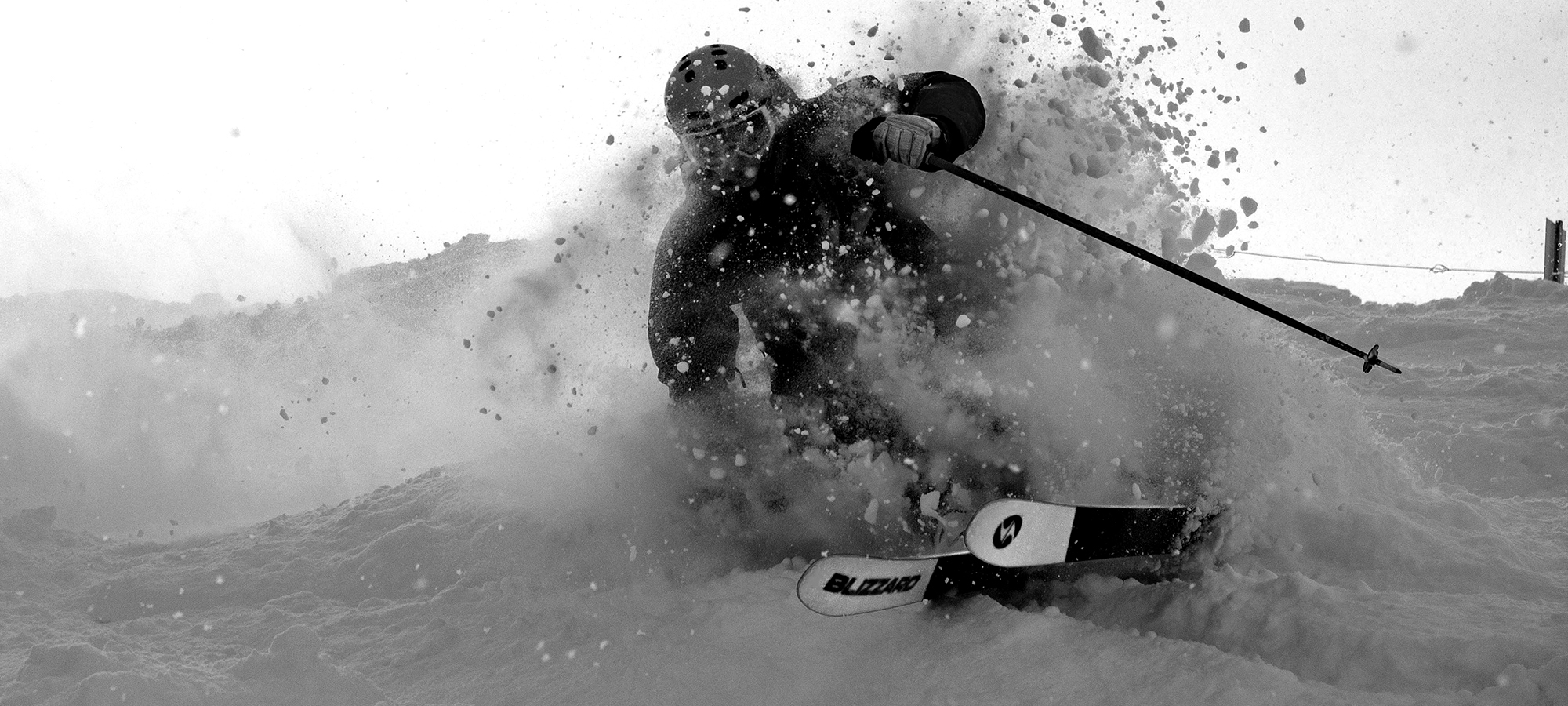
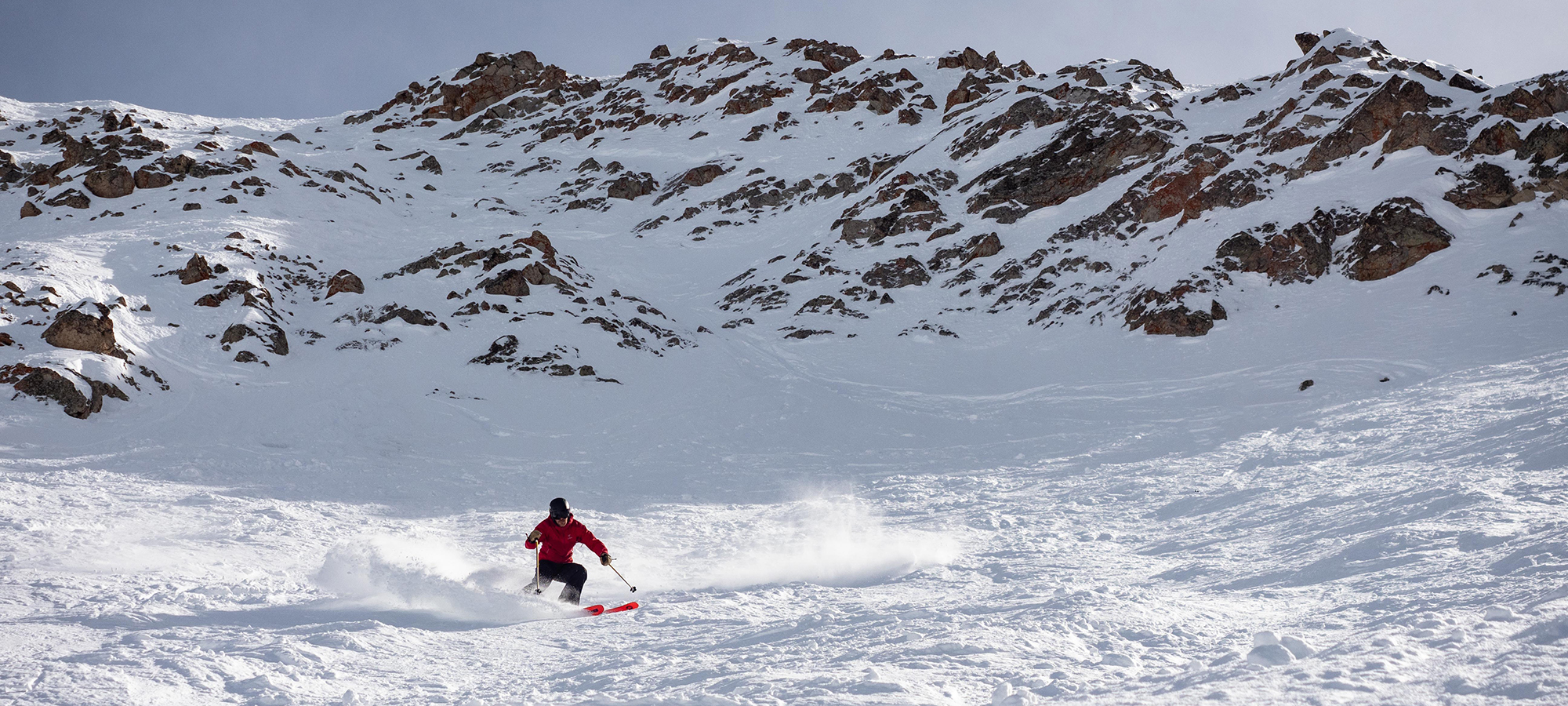
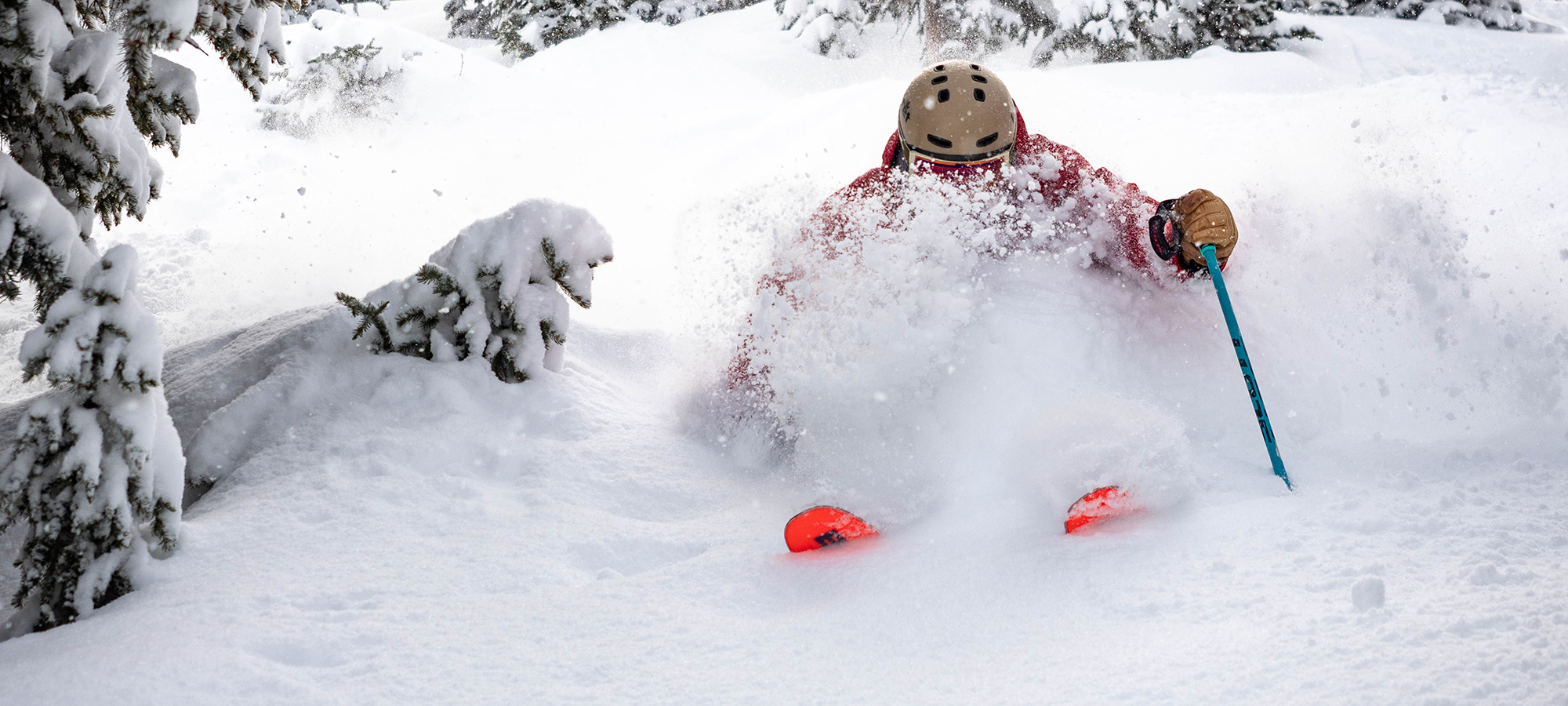
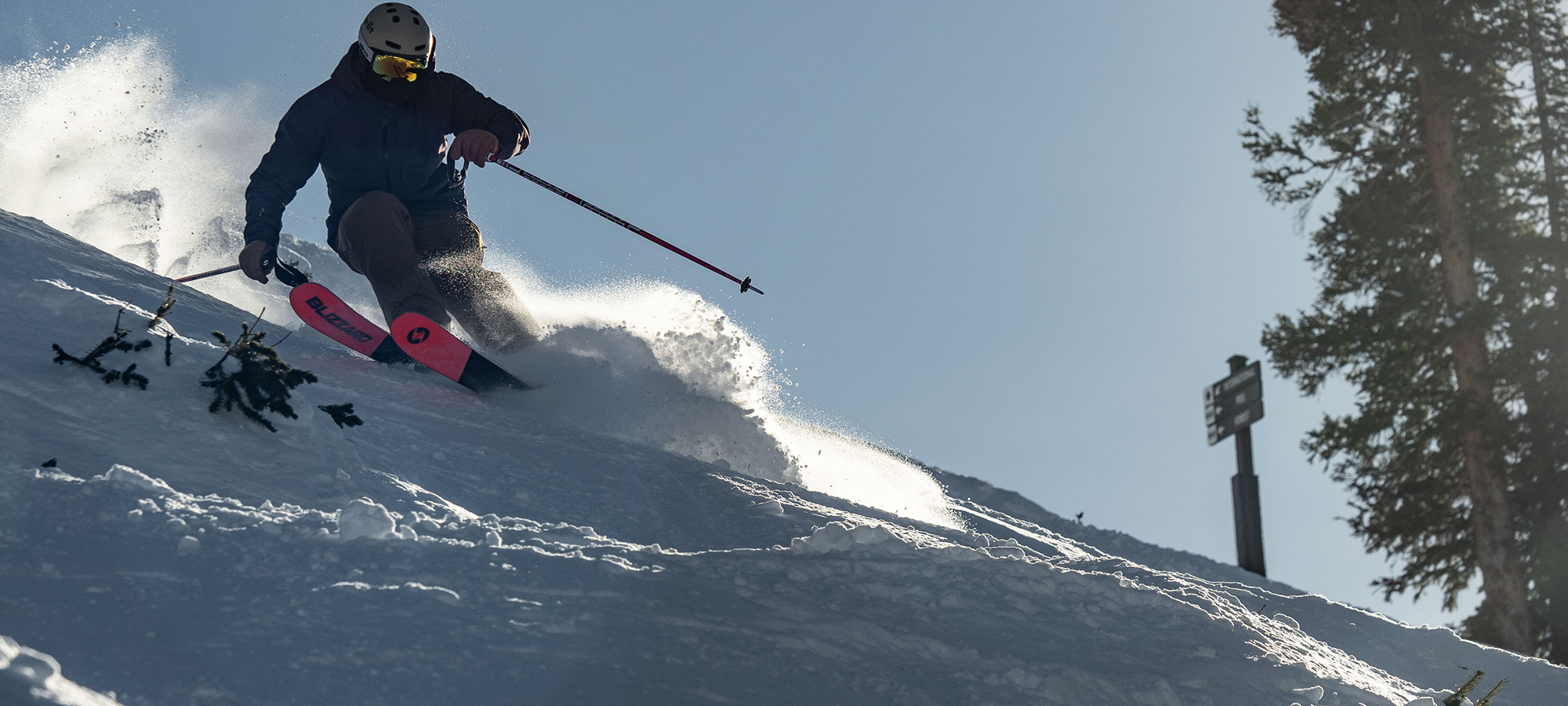
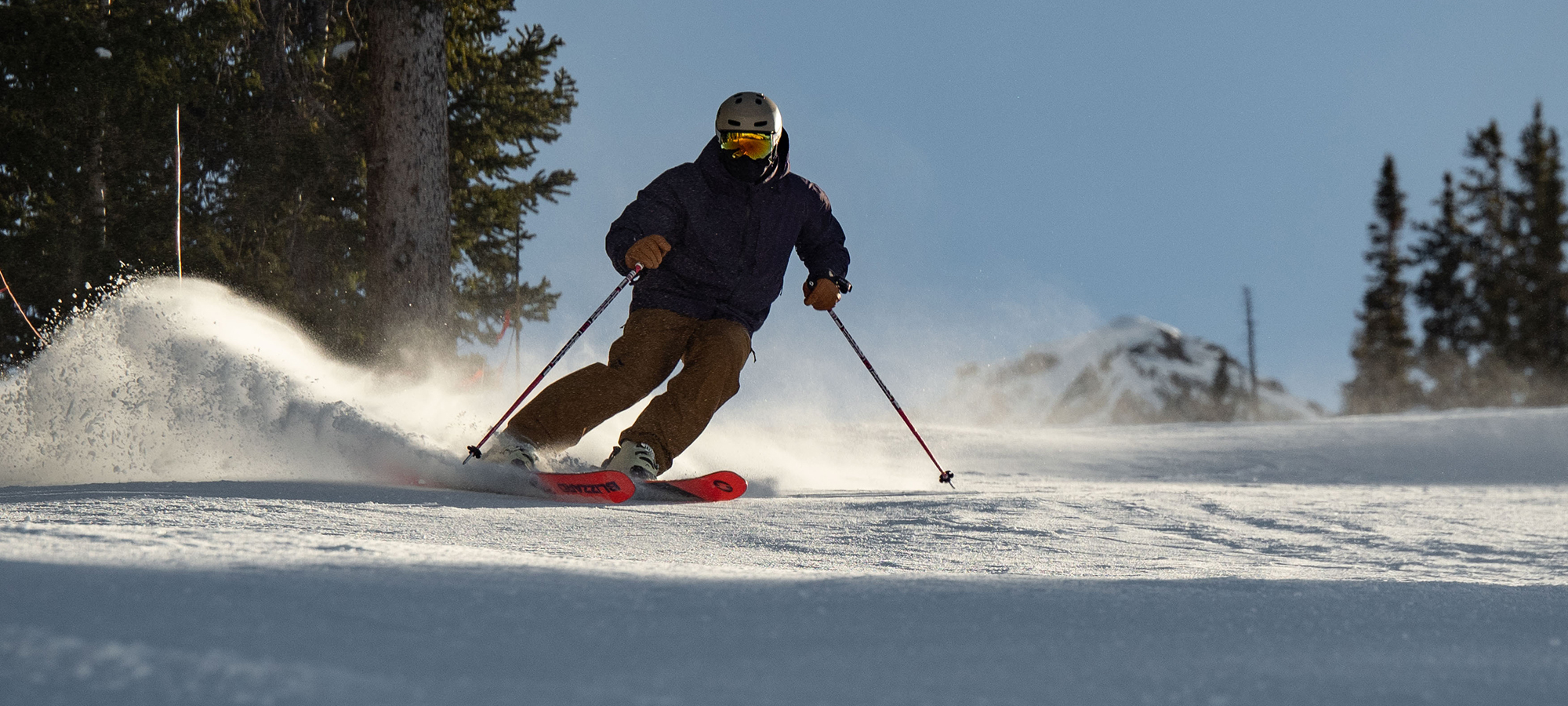
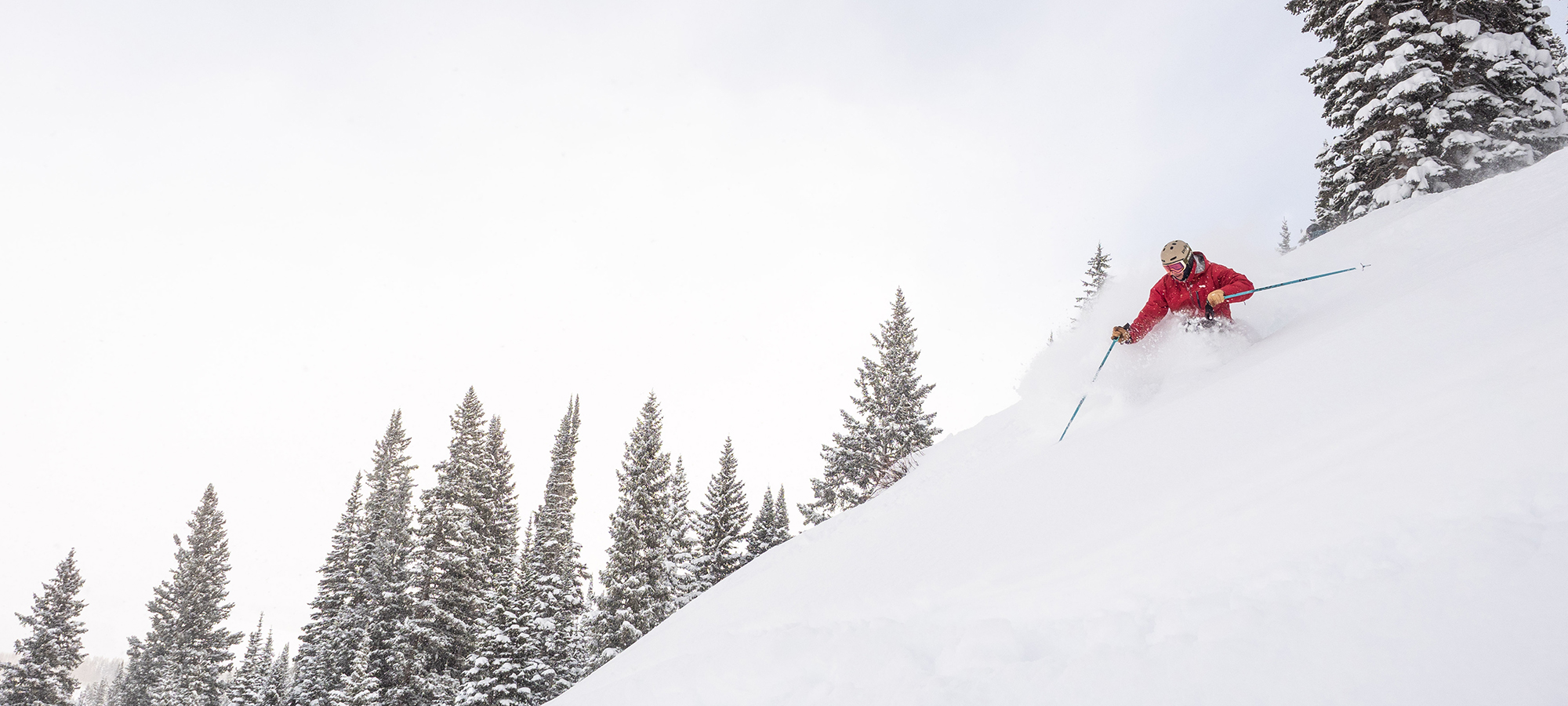
I am so happy that a traditional mount point continues to be a feature of this ski.
I am really hoping the new Cochise is more accessible then previous iterations. I believe it would make a fine one-ski quiver but the earlier versions have all needed some speed (and some room) to start feeling good.
I have a 14/15 model version, 185cm/28mt radius, strong than ever, yes needs some speed, but if you design well your trajectory you can pivot short radius contour with great fun: I am 185cm tall and 90kg weight.
Anyone ski these forward? The OG cochise skied really well at +1
Great Review! Also, “spreadsheet skier” is my new favourite term. I can’t wait to drop that on someone in a newschoolers/TGR forum!
Love the B&W photo! Looks amazing.
Jonathan: “It’s for people who used to love the Cochise, then stopped loving the Cochise when Blizzard changed it, and would like to again have a Cochise that they will once again love. It’s for them.”
I love when a plan comes together!
How do these compare to my Rossignol E98’s, which I love, and bought based on Blister’s recommendation a few years back? E98’s hold like rails on hard on-piste conditions, handle crud with ease, but seemingly lack some float in deep pow. Thus my intrigue with a 106.
“Sidecut radii are fake numbers created by the deep state to start arguments on the internet.”
I feel compelled to argue on the Internet. The geometry involved is pretty simple, and when I’ve taken trouble to measure skis’ profiles and calculated the radii, they’re as-stated for established makers like Blizzard (or Dynastar, Rossi, Fischer, etc).
The problem (and I’ve been guilty of this myself) is that people read too much into sidecut alone without considering other aspects of the ski’s design. For a racing ski that’s used on ice sidecut matters quite a bit, because there isn’t as much “give” that allows the ski to be bent into other shapes. For something like the Cochise, not so much.
I actually got the chance to ski them on a pretty corny, crudy, warm day and they were awesome. Pretty maneuverable if you get them. Dampest planks I’ve ever been on also. Can’t wait to get these is some fresh snow and some more technical terrain.
HI there
You mentionned that size was an issue re the new B97 Bonafide. Considering it has more rocker, would you say the same regarding the cochise ? 192 R11 is my daily driver in anything soft snow and I am looking to complement those with a new pair of sticks for variable conditions off slopes on low tide days (I am really happy with the 187 Brahmas on the hardpack). From your experience with those skis, would you recommend going for the bonafide in 183 or the Cochise ? in 185 or 192 ? I found the 188 R11 and 192 were very different skis so that might apply to the Cochise since I read it was the same core. I am 50yo, 6’2/200. I get 60 days a year inbound + touring in spring. Thank you !
Any idea why the ski came out so much lighter than specd? Blizzard slates 185 as 2320. Hoping the initial batches came out light and the current production will come out as intended.
Thanks!
Can you please compare the new Cochise 106 185 with Scott Scrapper 115 182 and Scott Pure pro 109Ti 182? I am most interested in flex stiffness and edge hold. Thank you very much.
My search for an OG Bodacious 196 replacement might end with a Cochise 192–and my Atomic Atlas 192s will see more action on pow days.
What did you end up doing to replace your Bodacious? I’ve searched the internet and Craigslist for Bodacious for sale. It’s as if they’ve evaporated. Also wondering if Blizzard, or other companies, are interested in making retro versions of their most popular skis – 2014 Volkl Katana as an example. I would love to find a 108 to 112 mm ski that handles PNW conditions as well as the original Katana or Cochise or Bodacious (118 mm waist) AND can still carve a respectable GS turn on the way back to the lift. The new Katana/Mantra 108 is as close as I’ve found but nowhere near as universally pleasing. Wondering what you did in search of a similar performing ski…